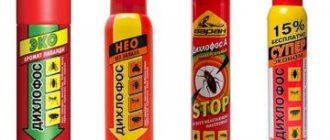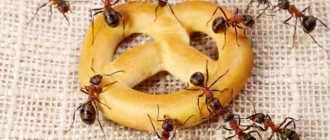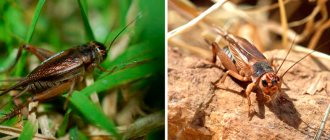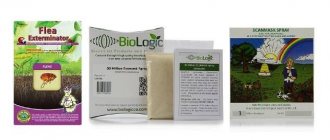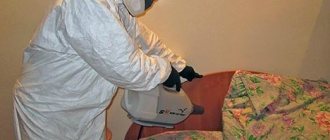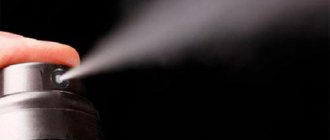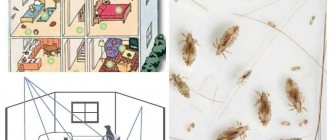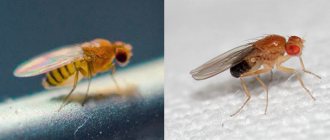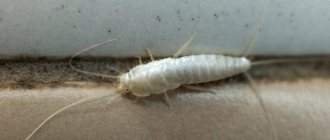In the spring, unwanted neighbors often appear on a summer cottage or in a private house - wasps, bees and hornets, which are dangerous to humans, wooden buildings and garden trees. To avoid stings and damage to structures, it is important to know how to get rid of hornets and prevent them in the future. Traditional methods, pesticides and mechanical destruction of nests can help solve the problem.
Hornets are large insects that cause fear with their appearance, and their bites are dangerous to life and health. In order to protect yourself and your site, it is important to know how to deal with pests and destroy their nests
The article contains effective methods for exterminating pests, and also presents effective preventive measures that will help prevent the occurrence of such a problem.
Features and danger of hornets
The hornet is a large insect belonging to the winged subclass and arthropod phylum. Adults reach 3-5 cm depending on the subspecies. Insects have a large head, on which there are three eyes and antennae, the number of which differs in males and females. The rounded abdomen is covered with alternating yellow and black stripes.
In females, there is a sting at the tip of the belly, which simultaneously serves as an ovipositor. In its normal state it is retracted, and insects use it only for self-defense. At the same time, pests can use it repeatedly, making multiple bites.
Hornets are similar in appearance to wasps - they are black and yellow in color and have transparent wings. They are distinguished by their larger size, the presence of a “waist” at the junction of the abdomen with the chest, and increased aggressiveness towards humans and bees.
The pest's bite is very dangerous, because along with the sting, poison penetrates into human flesh, causing an acute allergic reaction and intoxication of the body. Swelling and pain occur at the site of the lesion. Repeated hornet stings cause anaphylactic shock, which can be fatal.
To live and breed offspring, insects create nests, which are located mainly in attics, under roofs, in the walls of houses and other hard-to-reach places. They often settle in the hollows of trees located near the apiary. This makes it easier for them to find food as they steal honey from the bees, destroying them. To preserve the apiary, it is important to promptly destroy pests or expel them from the territory.
In winter, all individuals die, leaving only the fertilized uterus, which, when warming, lays eggs and nurses the offspring. It is better to carry out the operation to destroy the nest in winter or early spring - in such conditions the insect population is not so large.
To build nests, pests choose secluded corners where they have access to protein foods or sweets. Favorite places are tree hollows, attics, walls, and the area under the roof. They often settle near apiaries, which poses a threat to beekeepers
Potential danger of hornets to people
For a non-specialist in entomology, a hornet differs from a wasp only in its larger size (up to 3–5.5 cm). He has the same striped yellow-black color and a pronounced “waist”. A professional will name a few more differences - a head growing into the chest, a larger “top of the head”, a chocolate-colored abdomen.
From the appearance of the hornet it is easy to guess that this is an aggressive insect
A hornet sting is very dangerous. There are several reasons for this:
- Extremely painful bite and almost instantaneous development of the inflammatory process. The composition of insect venom is very complex, similar to the toxin of a rattlesnake.
- Having stung a person, the hornet remains “competent” and can sting again, and more than once.
- The attacking individual spreads special pheromones, focusing on which, “help” quickly arrives. The more bites, the worse a person tolerates them.
- An individual reaction to bites that cannot be predicted in advance. For some, this is limited to pain, inflammation and swelling, but much more serious negative consequences are possible - allergies up to anaphylactic shock, malfunctions of the cardiovascular, nervous and bronchopulmonary systems. In young children, internal organs may be damaged and problems with immunity may arise.
Insects live in large colonies. By nature they are aggressive predators. Finding a person within a radius of 2–3 m from the nest is already a sufficient reason to attack.
Video: important information about hornets
Precautions when killing insects
Hornets are dangerous with their bites, so when planning a special operation to destroy them, take the appropriate safety measures:
- wear a special protective suit or thick clothing that insects cannot pierce with their stings;
- take care to protect your face by wearing a special hat with a mesh;
- act carefully - do not make noise, do not wave your arms or sticks, so as not to provoke the hornets into aggression;
- when working with poisons, use disposable containers to prepare the solution, which must be disposed of after use;
- use a respirator in case of spraying aerosols with toxic substances;
- When burning a nest, follow fire safety rules to avoid fire.
When going to fight hornets, wear a special protective suit for beekeepers or thick clothing to protect yourself as much as possible from insect bites
Proven methods of getting rid of hornets
There are various ways to combat hornets and wasps, some are aimed at achieving quick results, others will require from several days to several weeks. The main thing in this matter is calmness, patience and consistent implementation of recommendations.
In order to completely eliminate a settlement of hornets or wasps, you can:
- completely destroy the nest;
- use various traps to catch insects;
- use poisoned bait.
Destroying the entire hornet nest, along with the insects inside, is a very unsafe, but the fastest way. It is applicable only in cases where the home can be located and there is access to it. If insects appear from an unknown place, or they have found a place with difficult access, then you will have to get rid of them with the help of baits and traps. Although this method does not give immediate results, it is safer and more effective.
Neutralization and destruction of nests
To ensure you get rid of pests, destroy the nest. To find it, it is enough to follow the flight of insects, and then, depending on the location, choose the optimal method of destruction.
Sealing the nest
To destroy the hornets' home, use polyurethane foam. At night, when pests are less active, treat the hive with a sealing compound, thoroughly filling all cracks and holes. The lack of oxygen and the ability to fly out for food will lead to the extinction of all individuals.
To destroy the nest and its inhabitants, seal the evidence. This can be done with polyurethane foam or other sealing compound.
Pouring water
To flood the nest, prepare a bucket filled with water. For maximum effect, add an insecticide designed for wasps and hornets to the liquid. Place a bucket under the nest and gently lower it into the water. The liquid will fill the honeycombs and the insects will not be able to get out of their house, which will lead to their death.
Burning out with fire
Fire will help get rid of a pest nest located in an open area. Douse the home with a flammable mixture (gasoline) and set it on fire. During the operation, make sure that the flame does not spread to trees, dry grass or outbuildings, otherwise you will have to fight not only pests, but also the fire.
Smoke bomb
A smoke bomb (Mukhoyar, FAS, HELP, etc.) will help destroy the nest. The application procedure is as follows:
- Insulate the room and seal all cracks so that insects cannot escape.
- Make sure that there are no children, pets, or food near the treatment area.
- Activate the smoke bomb according to the instructions.
- Clean the room.
Smoke bombs will help control pests. Before use, carefully read the instructions and take the recommended safety measures
Traps and bait
Traps with bait will help get rid of single insects remaining after the destruction of the nest. You can make them yourself using available tools and materials. Spoiled fish, a mixture of honey and beer, and fermented fruit syrup are used as bait.
The simplest trap option is sticky tape, which is used to catch flies and cockroaches. You can do it yourself:
- Cut out small strips of thick cardboard.
- Apply a generous layer of honey or fruit syrup. This will serve as both bait and a trap for insects to stick to.
- Place bait in areas where hornets frequently appear.
- Replace traps periodically and burn old ones.
Homemade traps with bait located in places where insects are active will help you catch single pests.
You can make other traps with your own hands:
- put the bait in a glass jar and close it with a lid with a hole in the shape of a cross and the edges of the cut curved inward;
- Cut off the top of a plastic bottle (1/3) and insert it back with the neck down. Fill the bottom reservoir with bait and place the trap in a visible place;
- Pour the fermented fruit syrup into a large container (bucket) and leave it near the pest habitat.
8 ways to destroy hornet nests
The main rule in hunting hornets is to use personal protective equipment.
Listed below are 8 effective options for solving the problem with these unpleasant insects. You can choose the one you like best, because they all have proven their effectiveness:
- Kerosene or boiling water. Without removing the cocoon from the spot where it was found, dip it in a bucket of boiling water or diluted kerosene. The bucket with liquid must be raised and suspended in such a way that the liquid completely covers the nest. After 24 hours it will go limp, perhaps even fall into a bucket, and its inhabitants will die.
- Aerosols. Buy several sprays of a product designed to combat flying insects. For example, Executioner, Dichlorvos, etc. Wear a protective suit and a respirator to protect your respiratory tract. Stand at the safest possible distance from the nest. Spray the product by directing the spray onto the cocoon. The lower entrance should be treated especially carefully. Try to get the product inside. Insects will die almost instantly. After some time, re-process.
- Insecticides. If the hornets' nest is located in a hollow tree, buy an insecticidal preparation and place it inside the hollow. After treatment, when the insects become lethargic (die), seal the hollow with foam or apply gypsum mortar to close the passage.
- Polyurethane foam. Blow out the honeycombs, entrances and exits of the nest with polyurethane foam. It quickly expands and hardens, and insects do not have time to leave their home. After a while they will die inside from hunger.
- Smoke bombs. Smoking is an excellent and quick way to get rid of hornets. To do this, it is recommended to use a sulfur bomb, which must be placed in a metal container before use.
- Fire. If you find a nest in a tree, pour flammable liquid over it and set it on fire. Carry out operations at a safe distance, do not use gasoline or kerosene. Grill lighter fluid is best.
- Boiling water. Hornets often make their nests in the ground and old stumps. The insects' home is easily accessible, so you can simply pour a large amount of boiling water over it. If it is difficult to prepare enough boiling water, you can use the previous point!
- Bait and poison. If you are faced with a situation where it is impossible to get to the hornets’ nest, then this method is for you! Train insects to feed in a certain place using bait, for example, pieces of minced meat. Then add toxic chemicals to the bait. The principle of operation of this method is simple: working individuals, bringing poisoned food into their home, will destroy not only the queen, but also the larvae. After some time, they themselves will die out, since they will also eat poisoned food. This method is also good because you will not only get rid of the current population, but also prevent the brood of a new one.
Hornets, like any insects, spend the whole day working, so all of the above options should be applied at night or in the evening. So, there will be more individuals in the nest and they will be less active, which will become additional protection from attack. Hornets react negatively to sudden changes in lighting, so do not use a flashlight or a very bright light source.
Whenever trying to get rid of a hornet nest, use personal protective equipment - a wide suit and a hat with a mesh covering over the face.
Insecticides for killing hornets
To combat hornets, insecticides are used in the form of aerosols or powders. Before use, carefully read the instructions and recommended safety precautions, wear a respirator, gloves and a tight suit that will protect against bites. Baiting should be carried out at night, when most insects are in their homes. After the hornets die, the nest is removed and burned.
Insecticides will help get rid of insects in hard-to-reach places. When working with chemicals, observe safety precautions and strictly follow the instructions for use.
Insecticides can be applied in several ways, depending on the location of the hive and its volume:
- spray the insecticide spray onto the nest for a few seconds. If necessary, repeat the treatment several times;
- pour the prepared poisonous composition into the bag, put it on the socket and secure with tape;
- pour the solution into a nest located in the ground or hollow of a tree and seal all holes with a rag so that insects cannot escape.
The following medications will help get rid of hornets in your dacha under your roof:
| Drug name | How to use | Peculiarities |
| "Bros" | Spray the can onto the nest | After treatment, burn dead insects to avoid poisoning pets |
| "Otos" | Dissolve 10 g of powder in 100 ml of water and spray the nest | The poisonous substance does not act immediately, so angry insects can attack in a swarm. Follow safety precautions when using this method |
| "Moskital" | Spray an aerosol can onto the nest | The drug is effective and high cost |
| Wespex Quick | Spray the nest | An effective remedy in the fight against hornets, bees and wasps. Safe for people and pets |
| "Dichlorvos" | Spray the product in the form of an aerosol in the pest habitat | Preparations produced by different brands are suitable for killing hornets. |
| Dr. Klaus | Direct the aerosol stream at the nest for 10-20 seconds | Carry out processing with doors and windows closed. Re-bait if necessary. |
If you cannot cope with the hornets on your own or their home is located in an inaccessible area, contact a pest control service for help. Specialists will quickly and effectively exterminate insects and clean up the area.
How to find and eliminate a hornet nest
If you destroy individual individuals, you are unlikely to solve the problem.
After all, insects will continue to reproduce, producing new offspring. To get rid of dangerous neighbors, it is necessary to completely destroy their colony. If you do not see a nest, and hornets are constantly flying around the area, you need to do everything possible to find the den. To do this, you can try to catch one individual and tie a bright-colored thread to it. Having released the insect, you can trace where the thread goes. This will allow you to at least roughly determine the location of the nest. However, practice shows that it is hardly possible not to notice a large accumulation of fairly large insects. If you are suspicious, carefully inspect attics or areas under eaves. Here you will probably find the home of hornets, which looks like a large cocoon.
Folk remedies for fighting insects
Folk remedies that are easy to use and safe for humans will help remove hornets. The insect extermination operation should be carried out in early spring, when the insect population is not so large.
Effective folk remedies and methods of combating hornets:
- Place a small piece of meat near the pest habitat. Insects will flock to the aroma of food, and they can be destroyed with an insecticide;
- chop 3 caps of fly agaric and boil them with 100 g of honey and 200 ml of water. Place the bait in half-liter jars and place it in the insect habitat. This composition has a poisonous effect on hornets;
- 3 tbsp. l. Dissolve boric acid in 50 ml of boiled water and boil for 10-15 minutes. Pour the solution into small containers and place around the nest. This will destroy the prey hornets, but will not lead to the complete extinction of the family.
Hang bunches of red capsicum near the nest - the bright aroma will scare away pests or, conversely, prevent them from leaving the hive, and they will die of hunger
You need to fight correctly: important precautions
When planning to fight hornets, you must remember that insect bites, especially numerous ones, are painful and dangerous to health. Precautions are absolutely necessary:
- Wait until night . After dark, insects are less active, most of them gather in the nest. But hornets never sleep soundly - at the slightest sign of danger they are ready to mobilize en masse.
- Cover your body as much as possible . Wear a jacket and trousers made of thick fabric, thick leather or rubber gloves, and a hat. Protect your face with a special mesh mask for beekeepers.
- When approaching the hive, do not make noise, do not turn on the light, try to do it as inconspicuously as possible.
- Prepare in advance everything to provide first aid for a bite - alcohol, ice, hydrogen peroxide, bandages, antihistamines.
- When attacked by hornets, do not panic, do not run, do not wave your arms, do not scream . This irritates the insects even more. Slowly move 8-10 meters away from the nest.
Important: not all methods that are recommended online to get rid of wasps are suitable for hornets. After all, the hornet is much larger and more dangerous. For example, dousing a nest with kerosene and expecting the hornets to immediately “get drunk” and lose orientation is dangerous. Just like trying to collect insects that have gone mad with noise from a nest with a vacuum cleaner.
Video: first aid for a hornet sting
Preventing the appearance of hornets on the site and in the house
After exterminating hornets in your home or area, take the recommended preventive measures to prevent the insects from appearing again:
- carefully treat the place where the nest was located with poisons or at least ordinary vinegar, place repellent herbs or an artificial nest there;
- place traps on the territory where single insects and queens will fall, which will prevent the construction of a nest in this territory;
- inspect the house and area for places suitable for nesting hornets, seal cracks and holes;
- Throw out garbage and food from pets' bowls in a timely manner - the lack of protein food will make the area less attractive to pests.
In the spring, check all potentially dangerous places on the site where pests can establish nests. Destroy hives in the initial stages of formation, before new insects hatch
The hornets that have settled in the neighborhood cause fear and pose a threat to people. To protect yourself and clear the area of pests, exterminate the insects and destroy the nest. You can do this yourself using mechanical methods, chemical or folk remedies, as well as through special services. After getting rid of the hornets, take preventive measures to avoid the problem from recurring.
How to find a hornet's nest in the house
It is quite difficult not to notice a hornet’s nest - it is a round structure up to 70 cm high and 40–50 cm in diameter. But sometimes insects reliably hide it, for example, in walls, under the floor. Then they act like this:
- One flying hornet is carefully knocked down with a rolled-up newspaper and a table tennis racket so as not to kill it, but only to stun it.
- Carefully mark the insect with a smear of bright paint.
- They wait until the hornet comes to its senses and heads towards the house. It will be easy to track him now.
Hornets nest - large and complex design
Hornets' nest and its inner life
A free-hanging hornet nest looks like a rather bulky light gray structure. Outwardly, it resembles a large fruit, the width of which can reach 40 cm and the height - 70 cm.
The hornet hive has a rather complex internal structure - it develops from several initial honeycombs built by the founding female, around which the working hornets subsequently constantly build additional structures, finishing them on the outside.
The video below shows a hornets nest and the constant bustle inside it:
This video shows how hornets behave inside their nest.
A nest of winged predators is built from thin young tree bark, which the workers chew and mix with saliva. The result is a soft and plastic mass, reminiscent of wet paper, from which the honeycomb or nest walls are molded.
This is interesting
The noise that hornets make with their jaws can be clearly heard at a distance of several meters from the nest. In a large hive, several hundred workers can be engaged in such work at the same time.
The photo shows a hornets nest at the stage of construction of the second tier of honeycombs. The first few houses for the larvae and the top of the new wall are visible:
It is also useful to read: Giant Asian hornet Vespa Mandarinia
The hornet queen constantly moves between tiers of the nest. The eggs laid by the workers are transferred and placed in honeycombs, in which the larva will develop until it completely transforms into an adult insect.
The hornets' nest has separate floors connected to each other by strong pendants.
Hornet larvae are carnivorous. If adult insects can sometimes feast on fruits, honey or secretions of aphids, their young feed exclusively on the meat of the prey they bring (usually small insects).
Before feeding the victim, the hornet clears it of its chitinous shell and removes its limbs and head. It is not surprising that all this uneaten “garbage” accumulates under the hornets’ nest. It often harbors various parasites, which have several generations in one season.
The photo shows a cross-section of a hornet hive:
Hornets live in the nest only from spring to autumn. At the end of the season, all its inhabitants are already gone; in rare cases, only a few overwintering young queens remain that have not scattered in search of other shelters. This is the time that is considered the safest for removing and destroying the hornets’ home, since it is often completely empty.
What to consider when exterminating hornets?
Before you begin to expel or destroy insects, it is necessary to determine their habitat. Most often, hornets prefer to settle and build their nest in places such as:
- barn;
- lumber room;
- attic;
- barn;
- house walls;
- trees;
- ground (burrows of other insects).
Knowing these habitats, you can choose the optimal method and means that hornets do not like. Usually this is either physical impact or chemical agents that quickly destroy them.
Precautionary measures
It is advisable to begin the fight against dangerous insects at night or early dawn. During this period, their activity decreases slightly
But it is important to remember that they are still active and, in case of danger, can attack. Therefore, you need to protect yourself with the help of protection measures such as:
- clothing that completely covers legs and arms;
- face brimmed hat;
- respirator (when using chemicals);
- leather or thick rubber gloves.
Prevention of insects
It is impossible to reliably protect yourself from proximity to hornets. But prevention will help avoid the construction of nests and their massive raids:
- Regularly inspect all places that are potentially attractive to insects for building a home. It is easier to stop a process that has just begun than to remove a colony later.
- After getting rid of the hornets, change something in the environment so that the place does not seem familiar to them: cut down tree branches, repaint the wall or ceiling.
- Seal cracks in walls and floors in a timely manner.
- Do not keep fruits, berries, cookies, jam, or other products with an odor attractive to hornets on the veranda or near open windows.
The reaction to hornet venom is individual, and death is possible. To avoid potential bites, you need to get rid of insects. The range of methods for combating them is wide - these include special insecticides and folk remedies. As a last resort, you can turn to the help of professionals. Once you decide to go it alone, be sure to take all necessary precautions.

